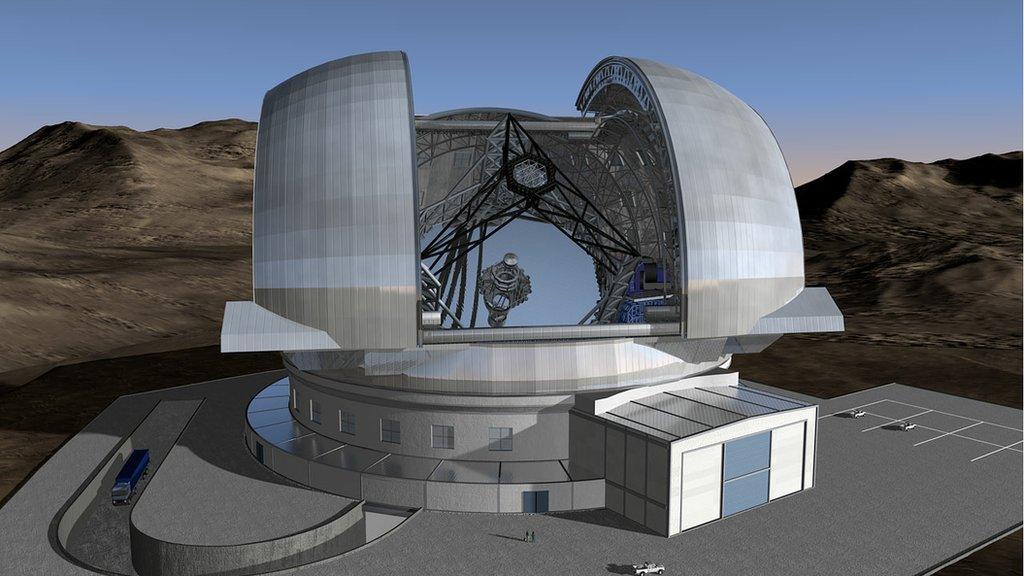E-ELT: UK signs on for Harmoni telescope instrument
- Published
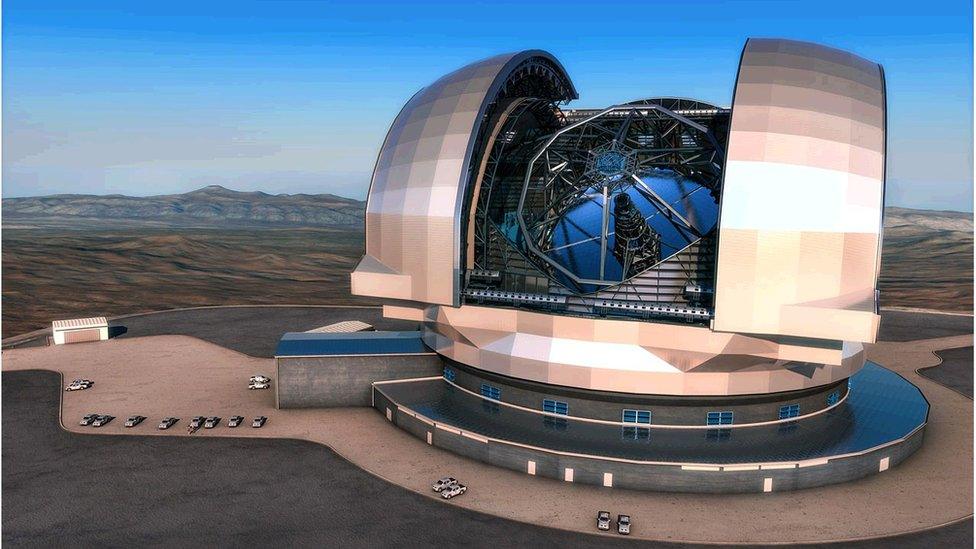
The E-ELT's primary mirror will be just short of 40m across
UK researchers have signed the contract that will lead to the development of one of the first instruments for the European Extremely Large Telescope.
The E-ELT will be the biggest optical and infrared observatory ever constructed, with a primary mirror just short of 40m across.
A British-led consortium will make a £50m spectrograph called Harmoni.
This will tease apart the colours of distant galaxies to determine the properties of those objects.
Its data will help astronomers understand their composition, the physics at work, and their dynamics - how the galaxies move through space.
Decade of work
The contract was signed between the European Southern Observatory organisation, which is building the E-ELT, and the UK's Science and Technology Facilities Council, the country's main funding body for astronomy.
The deal will see Oxford University lead the project, with Prof Niranjan Thatte at the helm, while assembly of the instrument will take place at the UK Astronomy Technology Centre in Edinburgh.
Harmoni's consortium draws on the talents of companies and institutions across Europe, with major contributions from France and Spain.
Tim de Zeeuw, ESO's director general, said the contracts now being signed by his organisation kept the telescope on schedule to gather "first light" in late 2024.
"Last week, we signed the German-led camera, Micado. And the (Dutch-led) mid-infrared instrument, Metis, which is also paid out of construction funds - we will sign that next Monday.
"Then in February, we hope to award the contract for the dome and the support structure for the mirror," he told BBC News.
The telescope will be placed atop Cerro Armazones, a mountain in Chile's Atacama Desert.
Engineers have had to blast the top off the peak to make a level surface, and just last week completed the new asphalt road that trucks will need to get all the observatory components on site.
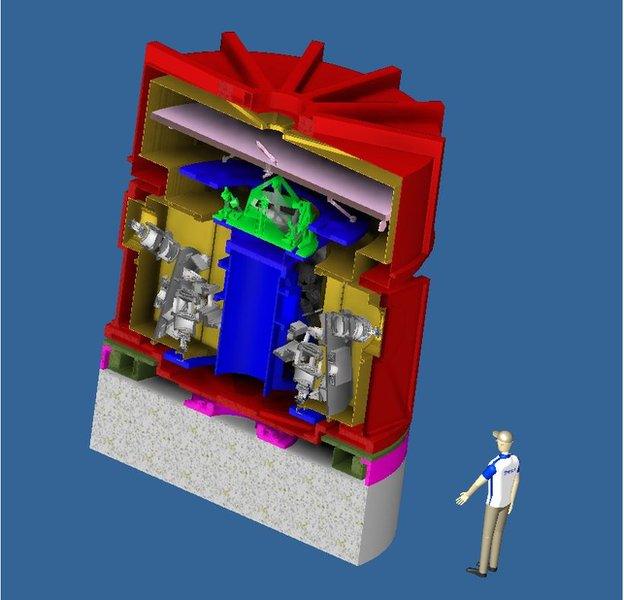
The Harmoni consortium has a lot of work ahead of it in the next 10 years
When first light occurs, it will most likely be with the use of a test camera, to check the proper alignment of the mirrors. That main mirror will have an astonishing 798 segments.
Micado, Harmoni and Metis will start operations in 2025. A 10-year implementation may seem like a long time, but the teams know it is actually a tight timeline for this kind of technological endeavour.
None of them are working from a standing start, however. A concept design for Harmoni was first put together back in 2007.
"We've been doing a lot in the wings, so to speak, since then," said Prof Thatte.
"The next three years will be spent doing a great deal of design work and prototyping, so that when we come to build the real thing we'll know it will go together smoothly and operate as planned."
Chile mountain awaits the E-ELT: Prof Thatte talks about the giant telescope and Harmoni
The E-ELT's vast collecting area and precise control - using what is known as adaptive optics to eliminate the twinkling effect on stars caused by our own atmosphere's turbulence - will result in super-sharp images of even distant, very faint objects.
But an instrument that can analyse the light from the telescope's targets is an absolutely fundamental tool to understand what it is astronomers are looking at.
Harmoni will use a technique called "integral field spectroscopy", which enables spectra of many positions in a galaxy, for instance, to be measured simultaneously.
Prof Thatte explained: "One way of thinking about it is that Harmoni will take 4,000 pictures simultaneously, each in a slightly different colour. So, in essence, we build up a data cube in a single exposure where the third dimension is wavelength, or frequency, and then we use the information in the spectrum to deduce all the physics of whatever object we're looking at."
Astronomers might use Harmoni to work out a galaxy's maturity by assessing which chemical elements predominate, or to track the motions of a galaxy's stars and gas to calculate its mass.
How the European Extremely Large Telescope (E-ELT) will work
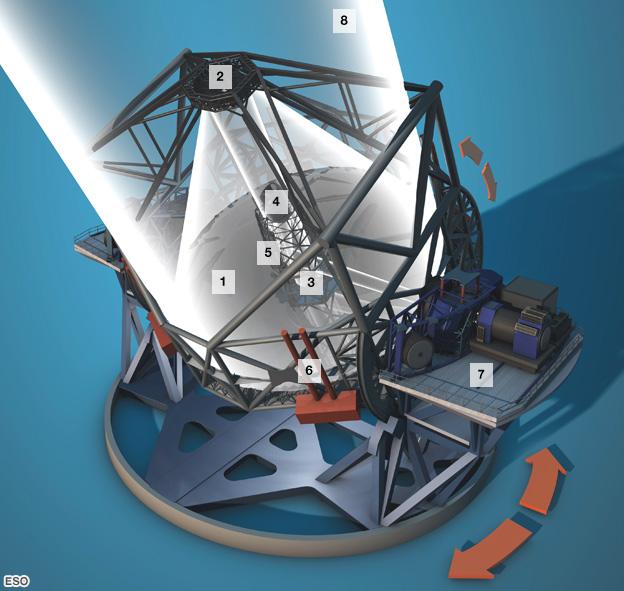
39.3m-wide primary mirror (M1) is made up of almost 800 segments
M2 is 4.2m wide and hangs upside down. It will weigh less than 12t
3.8m-wide M3 sits in a hole in M1. M3 moves with M2 and M4 to focus
2.4m-wide M4 can deform its shape to remove twinkling in stars
M5 is 2.6m x 2.1m. It stabilises the light on to the instrument detectors
Lasers make artificial stars on the sky to help correct the imaging
E-ELT will have two instrument decks; each deck to hold three units
The telescope will be sensitive to visible and near-infrared light
Jonathan.Amos-INTERNET@bbc.co.uk, external and follow me on Twitter: @BBCAmos, external
- Published3 June 2015
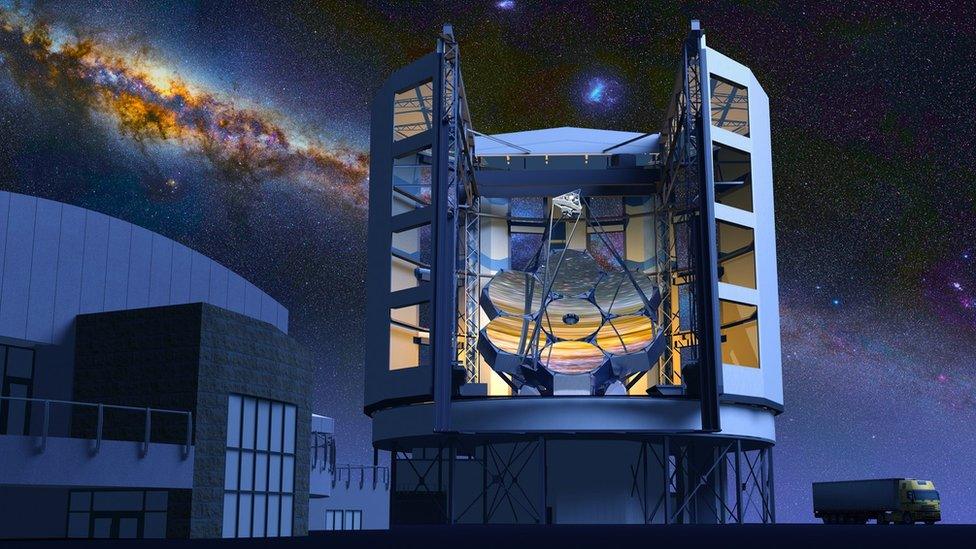
- Published10 April 2015
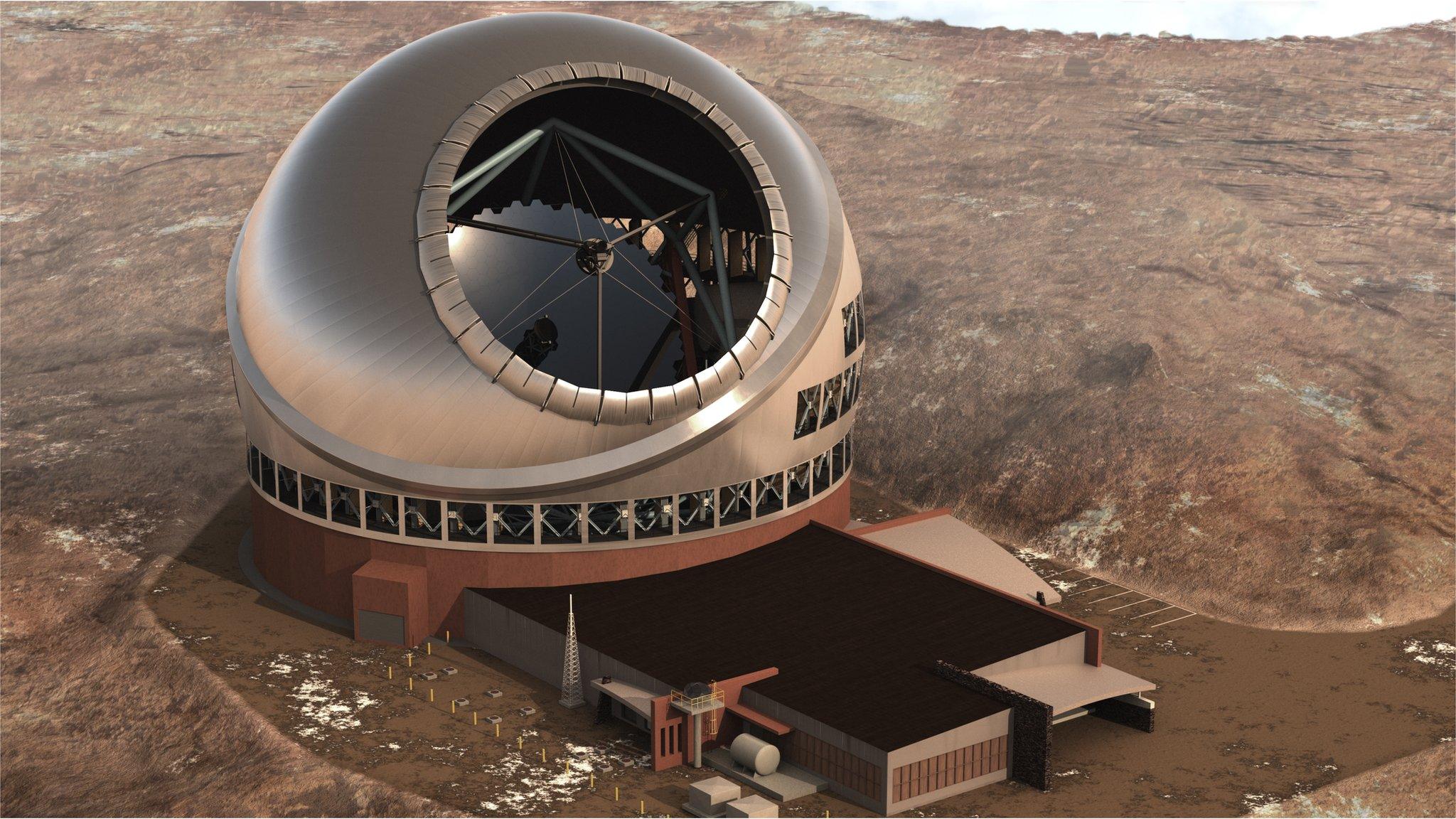
- Published19 June 2014
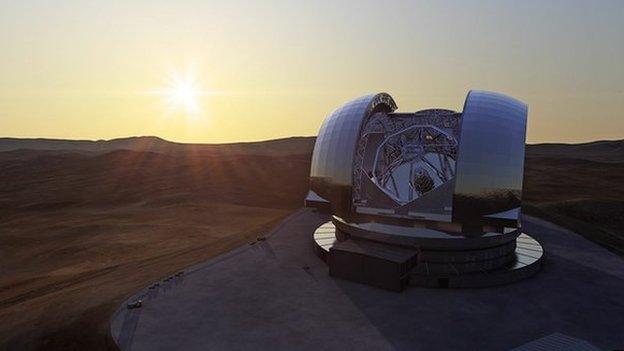
- Published11 June 2012
